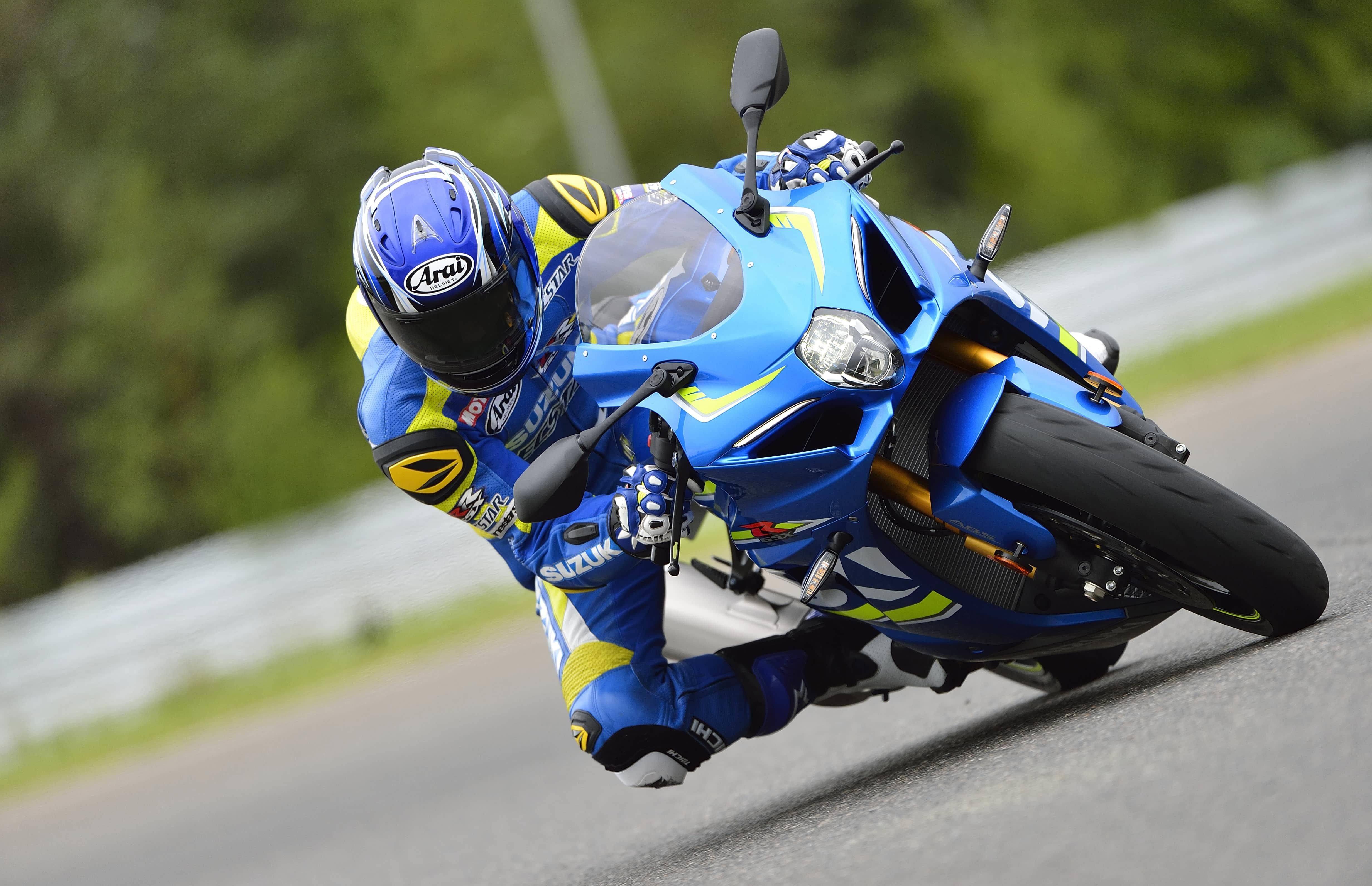5 Things You Need To Know About The 2017 Suzuki GSX-R1000
Modified On Mar 20, 2019 01:28 PM By Chinmay Chaudhary
- 68987 Views
- Write a comment
We are riding the new 2017 Suzuki GSX-R1000 at the Kari Racetrack this weekend. Here's five things you should know about the bike
Riding a litre-class superbike on a racetrack is an enlightening experience and it does not get more hallowed than the Suzuki GSX-R1000. The Suzuki GSX-R1000 comes with the pedigree of that of a bike that is equally capable on the track as well as the street, making it a favourite among seasoned riders. The new 2017 Suzuki GSX-R1000 is the most powerful and also the cleanest Gixxer ever made.
The Suzuki GSX-R1000 is a testament to Suzuki’s engineering prowess packaged in a looker of a litre-class motorcycle. It is the street-friendly version of the track-focussed and more committed GSX-R1000R. But that doesn’t mean it’s a lot more tamer than its track focussed cousin. And hence, to do justice to its true potential, we will be riding the superbike at the Kari racetrack on Saturday! While we drool at the thought, we’ll leave you with five facts about the bike that make it irresistible.

Engine -
The new Suzuki GSX-R1000 is powered by a 998cc inline 4-cylinder engine that produces 202PS of power @ 13,200rpm and a peak torque of 117.6Nm @ 10,800rpm mated to a six-speed gearbox. The high rpm figures point towards the high revving nature of the engine, a characteristic feature of litre-class motorcycles. Suzuki has employed Suzuki Racing Variable Valve Timing (SR-VVT) in the GSX-R1000 to increase top end performance without sacrificing on the bottom end power delivery.

Electronics -
The Suzuki gets a fully digital LCD instrument cluster which displays fuel level, instantaneous consumption, ambient temperature, freeze indicator, service reminders, S-DMS mode, Motion Traction TCS level, water temperature displays along with the conventional speedometer, tachometer, odometer, tripmeter, clock and lap time indicator. The bike gets 3-axis Inertia Measurement Unit (IMU) which measures pitch, yaw and roll and allows you take that corner faster and safer.

The bike gets an all-new Suzuki Drive Mode Selector (S-DMS) with the help of which the rider can select three different ride modes – track, rain and urban. There is also a 10-level Motion Track Traction Control System (TCS) that constantly monitors the front and rear wheel speeds, throttle and gear position and adjusts the power delivery to prevent loss of traction. Both the rider and traction control modes can be changed while riding the motorcycle just by closing the throttle and slotting it into the required modes. It also comes with a Suzuki Easy Start System which ensures easy cold starts.

Mechanical components -
The new Suzuki GSX-R1000 is built around a new twin-spar aluminium perimeter frame and weighs 10 per cent lesser than the previous model. The standard GSX-R1000 gets 43mm Showa Balance free forks with adjustable compression and rebound damping with spring preload at the front and a Showa Balance Free Rear Cushion Lite (BFRC Lite) monoshock with adjustable damping at high and low speeds and spring preload at the rear.
The bike gets two 320mm disc brakes with radially mounted Brembo monobloc calipers at the front and a 220mm disc with Nissin single-piston caliper at the rear. The GSX-R1000 is shod with Bridgestone Battlax 120/70 R17 tyre at the front and Bridgestone Battlax 190/55 R17 tyre at the rear. The front brake lever is slotted at the ends so that it reduces the chances of brake drag, induced by the wind pressure at high speeds.

Features -
The Suzuki GSX-R1000 features an all LED headlight and tail light section. It gets a 16-litre fuel tank and weighs 200 kg. Seat height and ground clearance is 825mm and 130mm respectively. The all LED headlamp, flanked by two LED position lights covering the air intakes give it an mean front face. The bike is offered in two colours – Metallic Triton Blue and Metallic Matt Black. The bike gets a redesigned tail section and a new exhaust muffler which is now smaller and goes very well with the beefy look of the entire bike. Turn indicator lamps have been moved down from the rear view mirrors to the front fairing.

Price and Rivals -
The Suzuki GSX-R1000 is priced at Rs 19 lakh. The Honda CBR1000RR is priced at Rs 17.61 lakh. The Kawasaki Ninja ZX-10R at Rs 16.4 lakh is the cheapest motorcycle of the lot. The Yamaha R1 is the most expensive motorcycle of the lot, priced at Rs 24.74 lakh (all ex-showroom, Delhi)- it is almost Rs 6 lakh more expensive than its nearest rival. Nearly all the motorcycles offer more or less the same electronics; all of them are Japanese so reliability is not an issue, and all of them have been updated in the recent past. The ZX-10R was launched in 2016 in the country and is more or less a new motorcycle even now. With the pricing and features that it offers, it’s simply an irresistible deal. The green goblin offers the most bang for your buck in this segment.

